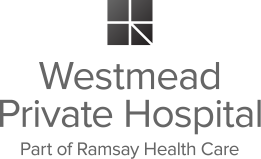Capturing the Miracle: Understanding Ultrasound Photos of Your Baby
The journey of pregnancy is filled with incredible milestones, and one of the most anticipated moments for expectant parents is the ultrasound examination. Ultrasound technology has revolutionized prenatal care, providing a window into the womb and allowing parents to catch a glimpse of their developing baby. In this article, we will explore the significance of ultrasound photos, the technology behind them, and what parents can expect during this magical experience.
1. The Miracle of Ultrasound Imaging
Ultrasound, or sonography, is a non-invasive imaging technique that uses sound waves to create visual representations of the developing fetus in the womb. These images, often referred to as ultrasound photos, offer a unique opportunity for parents to see their baby’s growth, movement, and overall development.
2. Types of Ultrasound Examinations
There are different types of ultrasound examinations performed throughout pregnancy, each serving a specific purpose:
- Early Pregnancy Ultrasound: Typically done in the first trimester, this ultrasound confirms the pregnancy, establishes the due date, and checks for the number of fetuses.
- Anatomy Scan: Conducted around 18-20 weeks, this detailed ultrasound examines the baby’s organs, limbs, and overall development.
- 3D and 4D Ultrasound: These advanced imaging techniques provide more detailed, three-dimensional images, allowing parents to see their baby’s features more vividly. The fourth dimension adds the element of time, capturing real-time movements.
3. Understanding Ultrasound Photos
Ultrasound photos may appear puzzling to the untrained eye, but obstetricians and ultrasound technicians are well-versed in interpreting these images. Key elements in ultrasound photos include:
- Fetal Anatomy: Different parts of the baby’s body, such as the head, arms, legs, and organs, are visible in ultrasound images.
- Amniotic Fluid: The fluid-filled space around the baby is essential for protection and allows for movement.
- Placenta: The location and health of the placenta are often assessed during ultrasound examinations.
- Fetal Position: The baby’s position in the womb, including whether they are head down or breech, can be observed.
4. The Emotional Impact of Ultrasound Photos
For many parents, the first ultrasound is an emotional and awe-inspiring experience. Seeing their baby’s tiny hands, watching them kick, or witnessing a tiny heartbeat can create a profound connection between the parents and their unborn child. Advanced technologies like 3D and 4D ultrasounds enhance this experience, providing a more lifelike representation of the baby.
5. Tips for a Positive Ultrasound Experience
- Communication with the Technician: Feel free to ask questions and seek clarification during the ultrasound. Technicians are often happy to explain what they are seeing.
- Bring a Support Person: Having a partner, family member, or friend present can make the experience even more special.
- Capture the Moment: Some ultrasound facilities offer the option to purchase images or videos of the ultrasound session, providing a lasting memento.
Conclusion
Ultrasound photos are not just medical images; they are cherished snapshots of the miraculous journey of pregnancy. These images allow parents to bond with their unborn child, fostering a sense of connection and anticipation. Obstetricians play a crucial role in guiding parents through the ultrasound process, interpreting images, and ensuring a positive and informed experience. As technology continues to advance, ultrasound remains a powerful tool in the realm of prenatal care, capturing the beauty and complexity of new life in the making.










